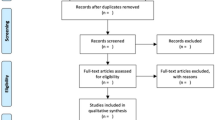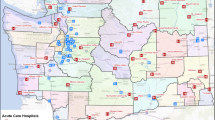Abstract
Background
The Society of American Gastrointestinal and Endoscopic Surgeons (SAGES) Guidelines Committee develops evidence-based guidelines for practicing surgeons using standard methodology. Our objective was to survey the SAGES membership regarding guidelines’ quality, use, and value and identify topics of interest for new guideline development.
Methods
An anonymous online survey was emailed in October 2019 to SAGES members. Respondents were asked 18 questions on their use and evaluation of SAGES guidelines and SAGES reviews and to provide suggestions for new guideline topics and areas of improvement. The survey was open for 6 weeks with a 3-week reminder.
Results
Of 548 responders, most were minimally invasive (41%) or general surgeons (33%). There was an even distribution between academic (46%) and non-academic practice (24% private practice, 23% hospital employed). Most used SAGES guidelines frequently (22%) or occasionally (68%) and found them to be of value (83%), above average quality (86%), and easy to use (74%). While most stated it was important (35%) or very important (58%) that SAGES continues to follow “rigorous guidelines development processes,” common suggestions were for more timely updates and improved web access. Of 442 overlapping topic suggestions, 60% fell into overarching categories of hernia, bariatric, robotic, HPB, and colorectal surgery.
Conclusions
The SAGES guidelines are used frequently and valued by its users for their quality and content. Topics proposed by SAGES members and valuable insight from this survey can guide creation of new guidelines and refinement of established guidelines and processes.
Similar content being viewed by others
References
Thoma A, Eaves FF III (2015) A brief history of evidence-based medicine (EBM) and the Contributions of Dr David Sackett. Aesthet Surg J 35:261–263
Guyatt GH, Oxman AD, Vist GE, Kunz R, Falck-Ytter Y, Alonso-Coello P, Schunemann HJ (2008) GRADE: an emerging consensus on rating quality of evidence and strength of recommendations. BMJ 336:924–926
Institute of Medicine Committee on Standards for Developing Trustworthy Clinical Practice Guidelines (2011) Clinical Practice Guidelines We Can Trust, National Academies Press (US) Copyright 2011 by the National Academy of Sciences. All rights reserved. Washington (DC). https://doi.org/10.17226/13058.
Antoniou SA, Tsokani S, Mavridis D, Lopez-Cano M, Antoniou GA, Stefanidis D, Francis NK, Smart N, Muysoms FE, Morales-Conde S, Bonjer HJ, Brouwers MC (2019) Guideline assessment project: filling the GAP in surgical guidelines: quality improvement initiative by an international working group. Ann Surg 269:642–651
GRADEpro GDT: GRADEpro Guideline Development Tool [Software]. McMaster University, 2015 (developed by Evidence Prime, Inc.), Available from gradepro.org
Stefanidis D, Richardson WS, Fanelli RD (2010) What is the utilization of the SAGES guidelines by its members? Surg Endosc 24:3210–3215
Hope WW, Richardson W, Fanelli R, Stefanidis D (2014) How do SAGES members rate its guidelines? Surg Endosc 28:1153–1157
Qualtrics (2019), Qualtrics, Provo, UT, https://www.qualtrics.com
Institute of Medicine (2011) Clinical practice guidelines we can trust: standards for developing trustworthy clinical practice guidelines (CPGs). The National Academies Press, Washington, DC
WHO (2012) WHO handbook for guideline development. World Health Organization, Geneva
Ransohoff DF, Pignone M, Sox HC (2013) How to decide whether a clinical practice guideline is trustworthy. JAMA 309:139–140
Higuchi KS, Davies B, Ploeg J (2017) Sustaining guideline implementation: a multisite perspective on activities, challenges and supports. J Clin Nurs 26:4413–4424
Conklin J, Farrell B, Suleman S (2019) Implementing deprescribing guidelines into frontline practice: barriers and facilitators. Res Social Adm Pharm 15:796–800
Frantsve-Hawley J, Rindal DB (2019) Translational research: bringing science to the provider through guideline implementation. Dent Clin North Am 63:129–144
Lewis S, Chowdhury E, Stockdale D, Kennedy V (2020) Assessment and management of tinnitus: summary of NICE guidance. BMJ 368:m976
Bromham N, Kallioinen M, Hoskin P, Davies RJ (2020) Colorectal cancer: summary of NICE guidance. BMJ 368:m461
Webster K, Eadon H, Fishburn S, Kumar G (2019) Ectopic pregnancy and miscarriage: diagnosis and initial management: summary of updated NICE guidance. BMJ 367:l6283
Boffa RJ, Constanti M, Floyd CN, Wierzbicki AS (2019) Hypertension in adults: summary of updated NICE guidance. BMJ 367:l5310
Murray IR, Murray AD, Wordie SJ, Oliver CW, Simpson A, Haddad FS (2017) What surgeons need to know about infographics. Bone Joint J 99:1557–1558
Gad M, Salem A, Oortwijn W, Hill R, Godman B (2020) Mapping of current obstacles for rationalizing use of medicines (CORUM) in Europe: current situation and potential solutions. Front Pharmacol 11:144
Yun GW, Trumbo CW (2000) Comparative response to a survey executed by post, e-mail, & web form. J Comput-Mediated Commun 6:JCMC613
Acknowledgements
We appreciate the SAGES members that responded to our survey and provided their valuable insights into our guidelines.
Funding
No external funding was received for this study.
Author information
Authors and Affiliations
Corresponding author
Ethics declarations
Disclosures
Dr. Dirks has equity interest in Johnson & Johnson unrelated to this project. Dr. Haggerty reports personal fees from Medtronic (consulting), personal fees from W.L. Gore (teaching honoraria), and travel expense from Intuitive, outside the submitted work. Dr. Pryor is a speaker for Ethicon, Gore, Merck and Stryker. She is a consultant for Obalon. Dr. Stefanidis has received research support to his institution by ExplORer Surgical Inc. and Bard, which are unrelated to this project. Drs. Kohn and Walsh have no conflicts of interest or financial ties to disclose.
Additional information
Publisher's Note
Springer Nature remains neutral with regard to jurisdictional claims in published maps and institutional affiliations.
Supplementary Information
Below is the link to the electronic supplementary material.
Rights and permissions
About this article
Cite this article
Dirks, R.C., Walsh, D., Haggerty, S. et al. SAGES guidelines: an appraisal of their quality and value by SAGES members. Surg Endosc 35, 1493–1499 (2021). https://doi.org/10.1007/s00464-021-08323-2
Received:
Accepted:
Published:
Issue Date:
DOI: https://doi.org/10.1007/s00464-021-08323-2




